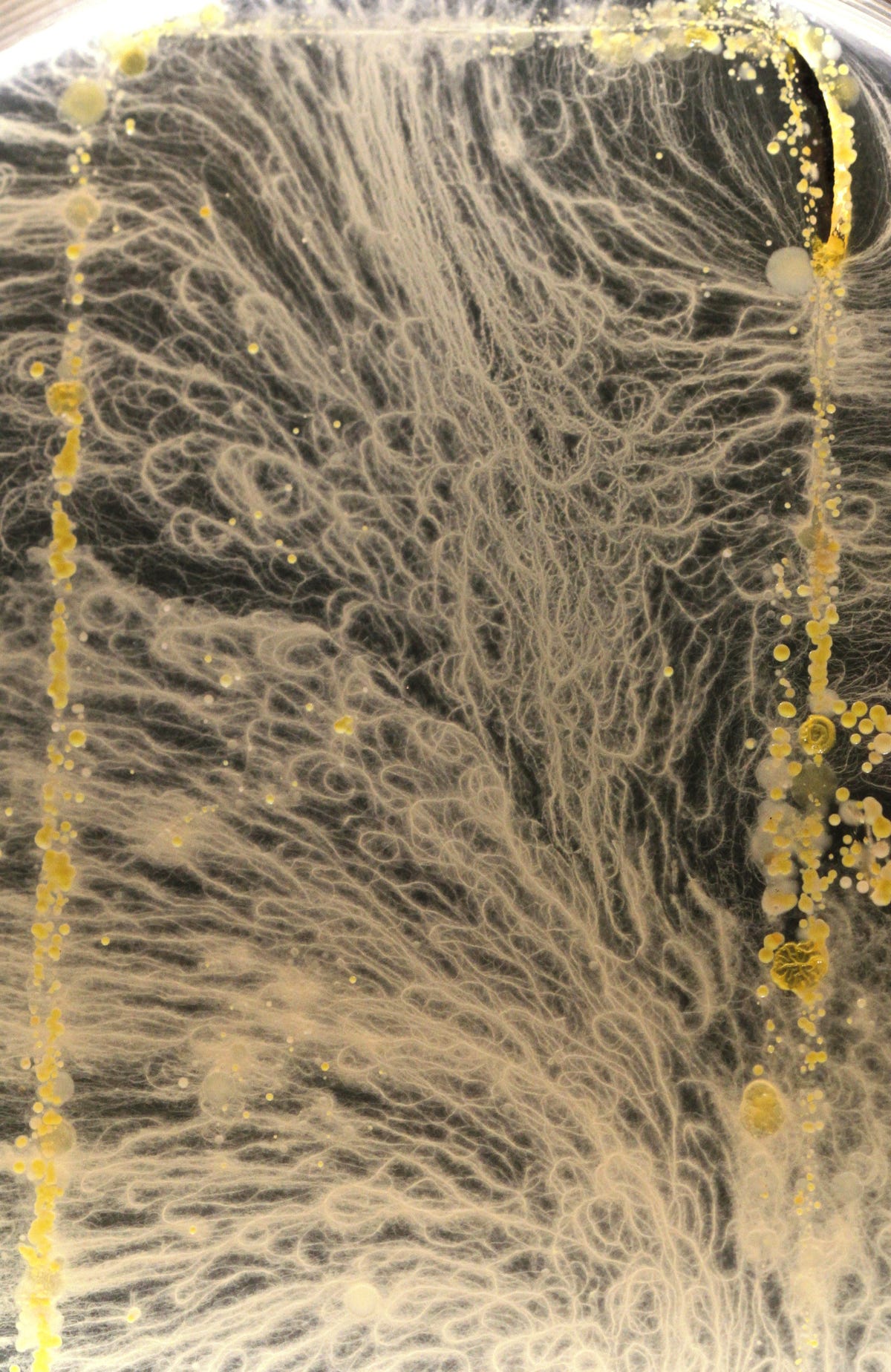Cell phone bacteria gets artsy (pictures)
Students test their phones to see how much bacteria the devices harbor. The bad news? Lots of bugs. The good news? The germs can look really cool.

Furry phone
While it's not news that cell phones harbor bacteria, it may be news to some that the bugs can come across looking so artsy.
As part of a study in bacteria transmission, Simon Park asked undergraduates in his Practical and Biomedical Bacteriology class at the U.K.'s University of Surrey to imprint their cell phones onto petri dishes filled with a bacteriological growth medium and wait a few days to see what bloomed. The result? A glimpse at some darn dirty devices.
"It seems that the mobile phone doesn't just remember telephone numbers but also harbors a history of our personal and physical contacts such as other people, soil, etcetera," Park says.
This bacteria-infested device, which looks like it could be a closeup of Bigfoot's finger, is Park's favorite of the bunch, he told Wired.co.uk.
"You can clearly see the outline of the phone on this, but the whole plate is covered by the spreading growth of a bacterium called Bacillus mycoides," he said. "This pattern of growth is unique to this bacterium, and because soil is its natural habitat, we know that this phone or its user had recently been in contact with soil. Each phone tells a story."
Gross or gorgeous?
So what story does this phone tell?
University of Surrey instructor Simon Park says most of the bacteria on his students' cell phones were harmless varieties normally found on the skin, such as the Micrococcus. Disease-carrying bacteria such as Staphylococcus aureus were also found, however.
"The ecological niche on the body for Staphylococcus aureus is the nostrils, so a furtive pick of the nose, and quick text after, and you end up with this pathogen on your smartphone," Park told Wired.co.uk.
We're guessing a not-so-furtive pick of the nose could do the job just as well.

